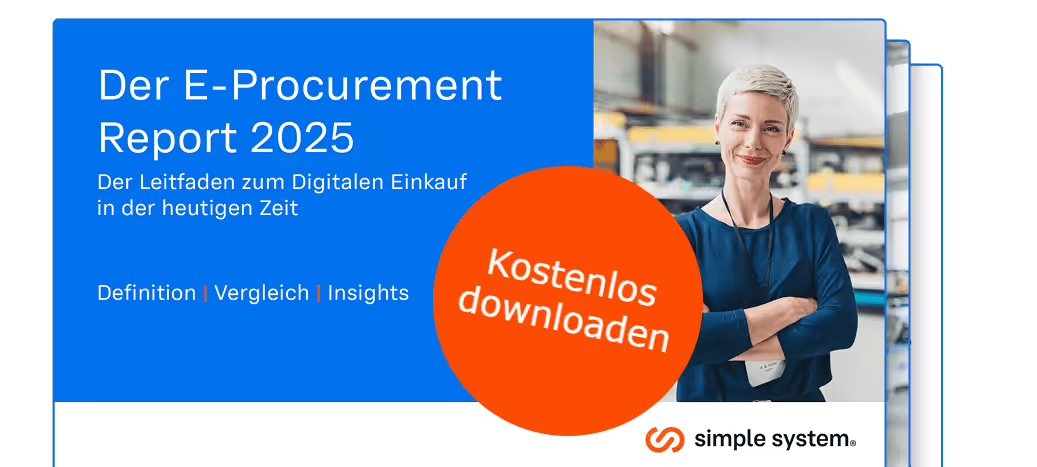Supplier: The central guide for your purchasing
The right vendor is the foundation of every successful supply chain and therefore a decisive factor for corporate success. But what exactly defines a supplier, what types are there, and what criteria should you use to select the best partner for your company?
This page provides you with a central overview of the topic. We explain the most important terms and show you the key aspects of dealing with your suppliers — from the initial search to a long-term partnership.
Definition: What is a Supplier?
A supplier (also known as a vendor) is a natural or legal person who regularly provides goods or services to a company in exchange for payment. In a business context, the supplier is the creditor, while the purchasing company is the debtor. Suppliers are essential players in both the value chain and the supply chain.
What Exactly Is a Supplier? A Definition.
A supplier is more than just a seller. They are a business partner who enables their customer's operations by providing materials, components, or services. The business relationship is typically long-term, with goods and services delivered on a regular basis under a framework or individual contract.
From an economic perspective, suppliers often also act as lenders by offering vendor credit through extended payment terms. For the purchasing company, the supplier is a key point of contact to ensure continuous supply and operational stability.
An Overview of Different Supplier Types
The term supplier is a broad category that includes various types of business partners. Depending on your needs and business model, you may work with several types. Understanding these distinctions is helpful when searching for suitable partners:
- Manufacturer:
A manufacturer produces and sells the goods directly. Buying from the source can provide price advantages and in-depth product knowledge, though it often requires higher minimum order quantities. - Wholesaler:
A wholesaler purchases large volumes from different manufacturers and resells smaller quantities to other businesses. They offer broader assortments and greater flexibility in order sizes. - Supplier (Subcontractor):
This type provides raw materials, parts, or components used in the buyer’s production process. In the automotive industry, for example, automotive suppliers play a critical role in the value chain. - Service Provider:
A service provider delivers intangible services rather than physical products – for instance, consulting, maintenance, software, or logistics services.
How Do You Choose the Right Supplier? Key Criteria.
Selecting a supplier is a strategic process that goes far beyond simply comparing prices. A widely used model in logistics is the Six Rights principle, which states that the right goods must be obtained in the right quantity, quality, at the right time, in the right place, and at the right price.
From this, the key decision-making criteria are derived – including reliability, flexibility, financial stability, communication, compliance, and sustainability.
IMAGE

Einkaufen & sparen
Erfahren Sie, wie es geht, in unserem kostenlosen E-Procurement-Report. Jetzt kostenlos und unverbindlich herunterladen.
Jetzt lesenBefore awarding a purchase order (P.O.), you should evaluate each potential partner based on the following criteria:
- Quality: Does the quality of the products or services consistently meet your requirements? Look for certifications such as ISO 9001 from institutions such as the “German Institute for Standardization (DIN)” be forgiven. Consistent high quality is crucial and is the basis for every warranty.
- Price and conditions: Consider not only the pure purchase price, but the total cost of ownership. This includes transportation, storage, and maintenance costs. Also check the payment options and whether a supplier credit is granted.
- Reliability: Reliability is a decisive criterion. Does the supplier meet his delivery times? Is the readiness to deliver high? Historical data and references to provide information here.
- Capacity and flexibility: Can the partner deliver the required quantities and also react to fluctuations in your demand? Is the company technologically up to date and ready to optimize processes together?
- Location and logistics: Short delivery routes reduce costs and risks. Official economic data, such as “Federal Statistical Office (Destatis)” provides, can help analyse potential supplier locations.
- Communication and service: Do you have a permanent contact person? How quickly and competently do you respond to inquiries? Good service is often worth its weight in gold in everyday life.
Supplier management: More than just ordering
The work doesn't end with the selection of the right partner. A successful business relationship must be actively maintained and managed. Here comes that supplier management into the game. It includes all measures for managing, developing and evaluating your suppliers.
The aim is to continuously monitor performance, minimize risks and, together with strategic partners, increase potential. This includes carrying out a supplier evaluation on a regular basis to ensure that performance consistently meets your expectations.
Common questions and answers (FAQs)
What is the difference between supplier and subcontractor?
A subcontractor is a specific type of supplier. It usually supplies raw materials, components, or a component that flow directly into the production of the purchasing company. The term supplier is the more comprehensive generic term for all suppliers of both end products and additional parts.
How many suppliers should you have?
It depends on the strategic importance of the product. For critical components, many companies rely on a multi-sourcing strategy (multiple suppliers) to minimize the risk of failure. For non-critical C-parts, a single-sourcing strategy (one supplier) is often more efficient.
What is a supplier declaration, and why is it important?
A supplier's declaration is a document issued by manufacturers and wholesalers to prove that the products delivered meet specific origin or quality requirements. It is significant to meet legal procurement requirements and to ensure the quality of the products that are integrated into the purchasing process.
How do I carry out a supplier audit?
To carry out a supplier audit, you should first define the criteria that are significant for evaluating the reliability and quality of suppliers. This includes, for example, compliance with the six-r rule, regular intervals between audits and documentation of the results. You should then determine the relevant information to evaluate the supplier's performance and, if necessary, make adjustments in procurement.
How can I efficiently manage supplier registration?
To efficiently manage supplier registration, you should set up a central system to store all relevant information. This allows you to quickly import data and organize product photos and other documents. You should also regularly update and evaluate suppliers to ensure that you are always working with reliable partners.









